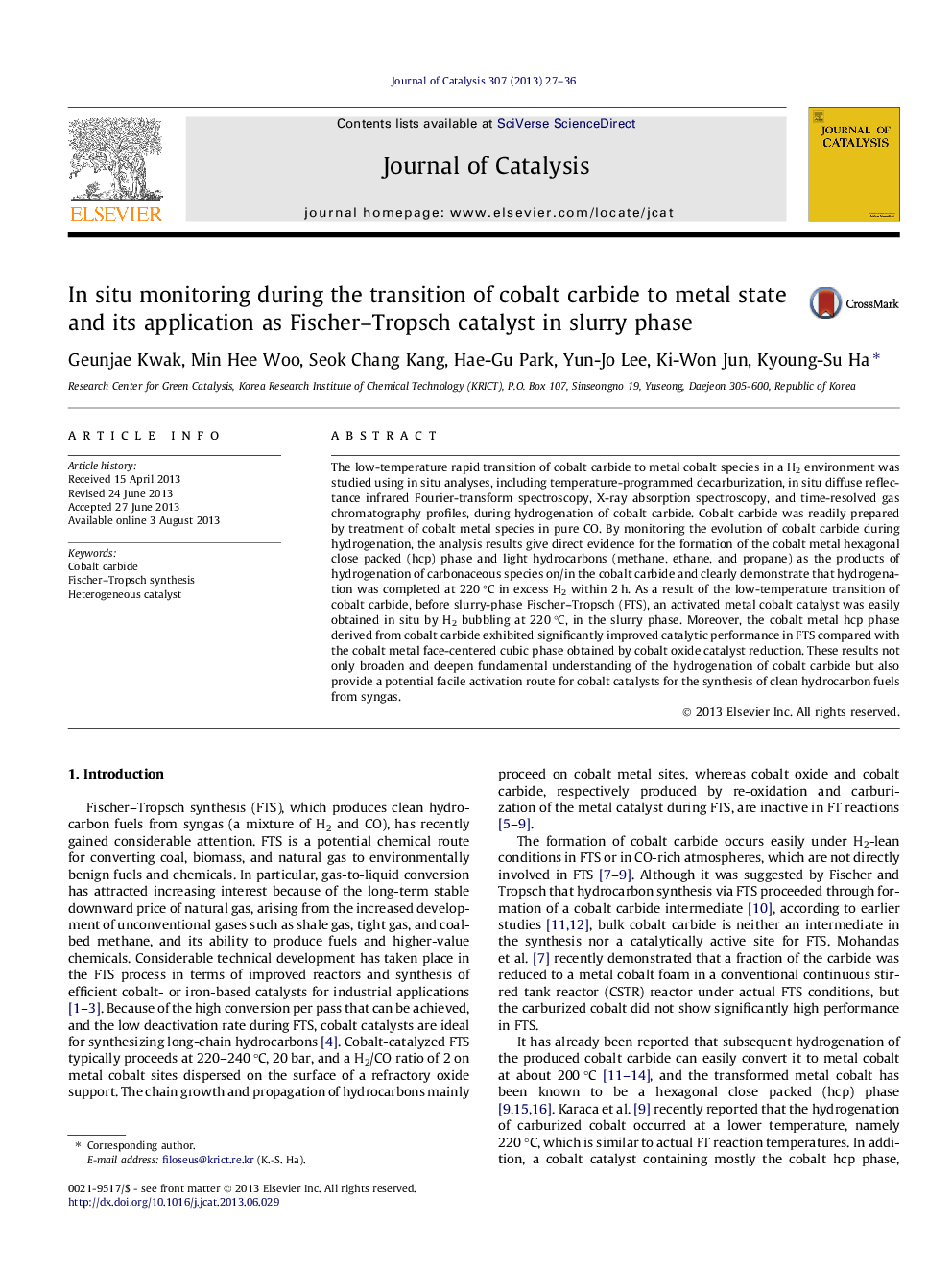| کد مقاله | کد نشریه | سال انتشار | مقاله انگلیسی | نسخه تمام متن |
|---|---|---|---|---|
| 61143 | 47567 | 2013 | 10 صفحه PDF | دانلود رایگان |

• The low-temperature transition of cobalt carbide to metal cobalt species is studied using in situ analyses.
• The carburized cobalt is stable under atmospheric conditions without any chemical transformations or exothermicity.
• The onset of the transition occurs at around 160 °C and lead to the formation of Co0 (hcp) and light hydrocarbons.
• The hydrogenated cobalt carbide exhibits improved catalytic performance in FTS.
The low-temperature rapid transition of cobalt carbide to metal cobalt species in a H2 environment was studied using in situ analyses, including temperature-programmed decarburization, in situ diffuse reflectance infrared Fourier-transform spectroscopy, X-ray absorption spectroscopy, and time-resolved gas chromatography profiles, during hydrogenation of cobalt carbide. Cobalt carbide was readily prepared by treatment of cobalt metal species in pure CO. By monitoring the evolution of cobalt carbide during hydrogenation, the analysis results give direct evidence for the formation of the cobalt metal hexagonal close packed (hcp) phase and light hydrocarbons (methane, ethane, and propane) as the products of hydrogenation of carbonaceous species on/in the cobalt carbide and clearly demonstrate that hydrogenation was completed at 220 °C in excess H2 within 2 h. As a result of the low-temperature transition of cobalt carbide, before slurry-phase Fischer–Tropsch (FTS), an activated metal cobalt catalyst was easily obtained in situ by H2 bubbling at 220 °C, in the slurry phase. Moreover, the cobalt metal hcp phase derived from cobalt carbide exhibited significantly improved catalytic performance in FTS compared with the cobalt metal face-centered cubic phase obtained by cobalt oxide catalyst reduction. These results not only broaden and deepen fundamental understanding of the hydrogenation of cobalt carbide but also provide a potential facile activation route for cobalt catalysts for the synthesis of clean hydrocarbon fuels from syngas.
The cobalt metal hcp phase was easily obtained by the hydrogenation of Co2C via H2 bubbling in FTS slurry reactor, which showed higher activity in slurry-phase FTS.Figure optionsDownload high-quality image (99 K)Download as PowerPoint slide
Journal: Journal of Catalysis - Volume 307, November 2013, Pages 27–36